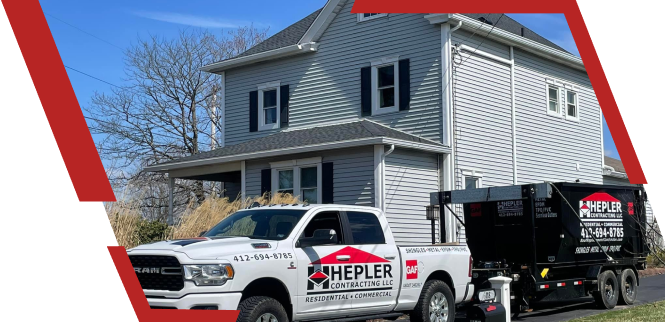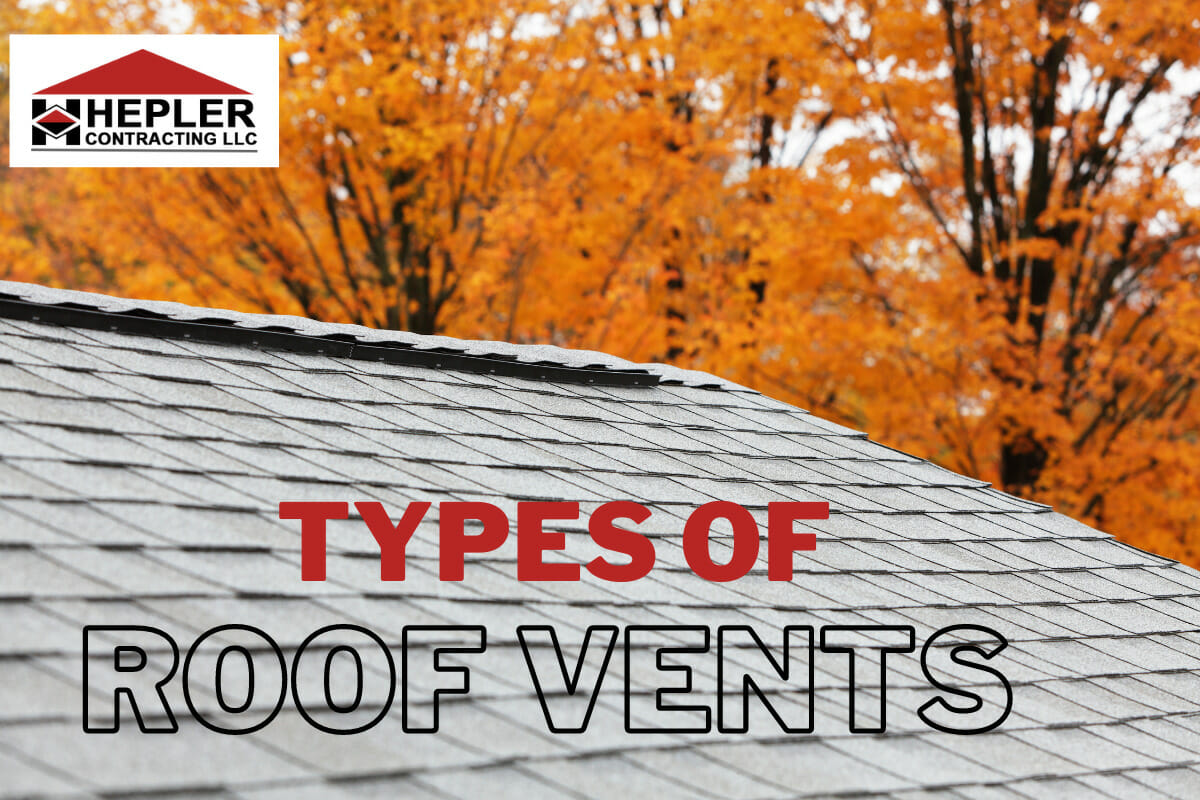Suppose you have installed roofing material of the highest quality, but after some time, you notice that your home and the attic are still facing problems. If you find yourself in a similar situation, then this could have something to do with your roof vents.
There are many types of roof vents available on the market. All of these roofing vents differ in their construction, durability, and uses. We get that all of this can be confusing, especially if you are not familiar with recent trends in the industry. Well, this is what we are here for!
In this blog, we will explain all the major types of roof vents that have made their mark and can help improve your property’s ventilation. But before diving into the topic, let us start with a brief overview of roof vents, and what they are.
What Is A Roof Vent?
Roof vents are openings or outlets in the roof of a building that allows air to flow in and out of the attic space. The main purpose of roof vents is to provide ventilation for the attic, which helps to control the temperature and moisture levels in the space. This is important because proper attic ventilation can help prevent damage to the roof, insulation, and other building materials, as well as improve energy efficiency by reducing the workload of heating and cooling systems. So, a roof ventilation system, along with the proper roof insulation, can drastically improve energy performance and use in your home.
We now hope you are clear with the purpose of this roofing component and why you should install a ventilation system if you haven’t already.
Now, let’s move on to the different types of roof vents your can install on your home.
Types Of Roof Vents That You Can Consider For Your Home
Several types of roof vents can be used in a building, each with its own specific purpose and installation requirements. Some are active roof vents, while some are passive. Some function as intake vents, while some roof vents can work both ways.
In the below section, we have explained all the different types of roof vents.
Roof Ridge Vents
Let us start our discussion with one of the most common types of roof vents that most homeowners use for ventilation in their homes, the roof ridge vent.
These are static roof vents installed along the roofing system’s ridge (also known as the roof’s peak). The ridge vent design allows cool air to flow freely through the attic space, providing ventilation and helping to regulate the temperature and moisture levels in the space.
Also, these exhaust vents usually cover the entire length of the roof’s peak. These are cut to fit in the ridge. This type of coverage allows for the vents to take up a greater surface area to exhaust hot air faster and keeps the attic at a reasonable temperature.
You can combine ridge vents with soffit vents to create an effective cross-ventilation system within your home. A combination of these can facilitate vertical ventilation, which is a type of ventilation that allows cold wind to enter a building and push the warmer air out from the attic. One advantage of roof ridge vents is that they are relatively less noticeable than other types of roof vents that we will cover in our blog. They are not usually visible, and you can easily cover them with ridge cap shingles.
Popular names in the industry manufacture ridge vents. Some of them include GAF and Owens Corning. Overall they are a suitable choice for any home, regardless of the style.
Also Read: Are Ridge Vents Better Than Box Vents?
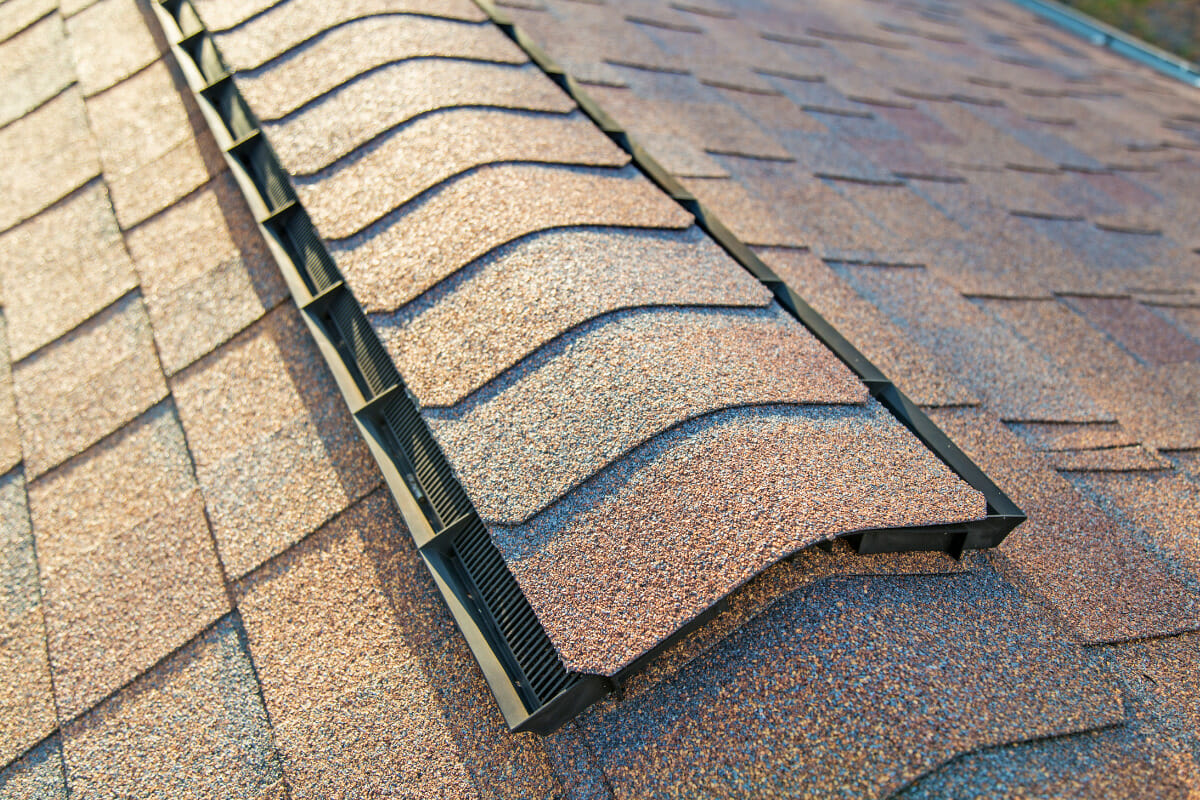
Turbine Vents (Roof Turbines)
Have you witnessed some large revolving item on the roof of a house that resembles a chef’s hat? These are known as turbine vents. Turbines are a type of natural roof vent that rely on wind power to ventilate the attic space. A roofing professional typically installs this vent on the roof of a building, and it consists of a spinning cylinder or propeller mounted on a vertical shaft. As the wind blows, it causes the turbine to rotate, generating a suction-like effect that draws hot air out of the attic and keeps your roof free from moisture.
Due to their unique style, the turbine vent is also called a whirlybird turbine. These roof vents do not require electricity to run and, therefore, can be a suitable option for your roof if you are looking to cut down on energy use.
They do have their share of limitations though. You cannot rely on turbines alone for ventilation., Whirlybird turbine vents require winds of a certain speed to run and pull air out of your attic. So, you may face trouble if you live in an area where wind gusts are less frequent, or not as strong as the wind required to run these turbines. Also, they lag in terms of power compared to other roof vents.
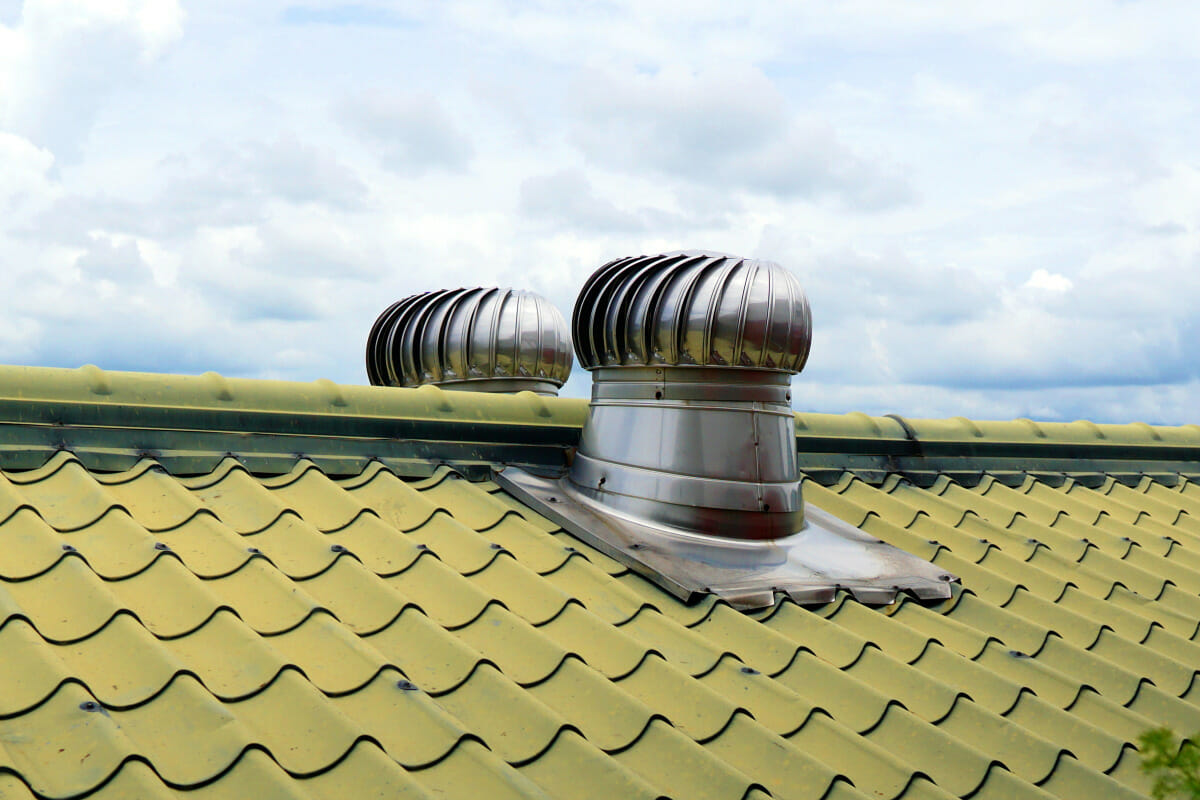
Solar-Powered Vents
Solar roof vents are powered vents that use solar power to generate electricity. The vent uses energy from the sun to power a fan that ventilates the attic space. Their design helps to provide ventilation while minimizing energy consumption, as solar panels provide a renewable and cost-effective power source.
One advantage of solar-powered vents is that they are energy-efficient and can help to reduce energy costs. Solar ventilation fans do not require electricity or wind to run.
They are also relatively simple to install and maintain and do not produce any emissions or other pollutants.
However, the problem with solar-powered vents is that most of these products are not as effective at maintaining the temperature of your roof and the attic. Solar vents, on a hot sunny day, can be too powerful, even more than what you may require. While on other days, these vents may not even run at satisfactory levels.
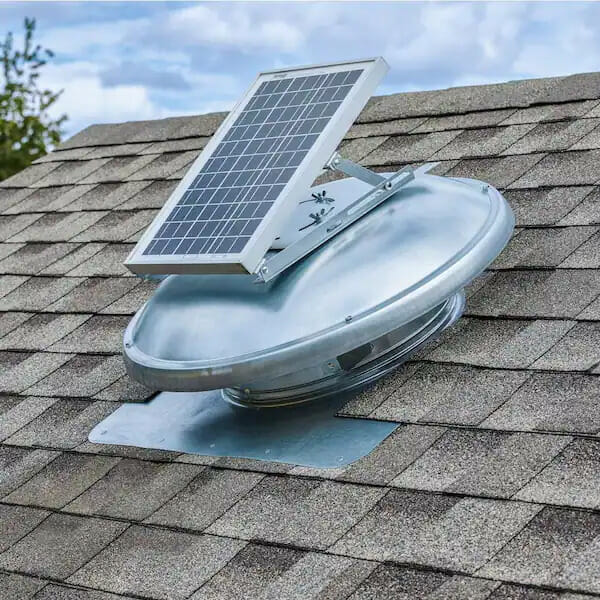
Soffit Vents
As a homeowner, you may have heard of soffits. If you are unfamiliar with the term, soffits are the horizontal underside of a roof overhang or eaves, directly below the fascia board. This roofing component is also useful in maintaining the ventilation of your home.
Soffit vents are openings or grilles that are installed in the soffits of a building. They are used to provide ventilation for the attic space and help regulate the temperature and moisture levels in your property.
Soffits are often used with other roof vents, such as gable end vents or ridge vents, to provide a way for air to flow in and out of the attic space.
Soffit vents are typically made of wood, vinyl, aluminum, or other materials, and they are available in various sizes and styles to suit different types of buildings. They are relatively easy to install and maintain and are regularly used on houses across the country.
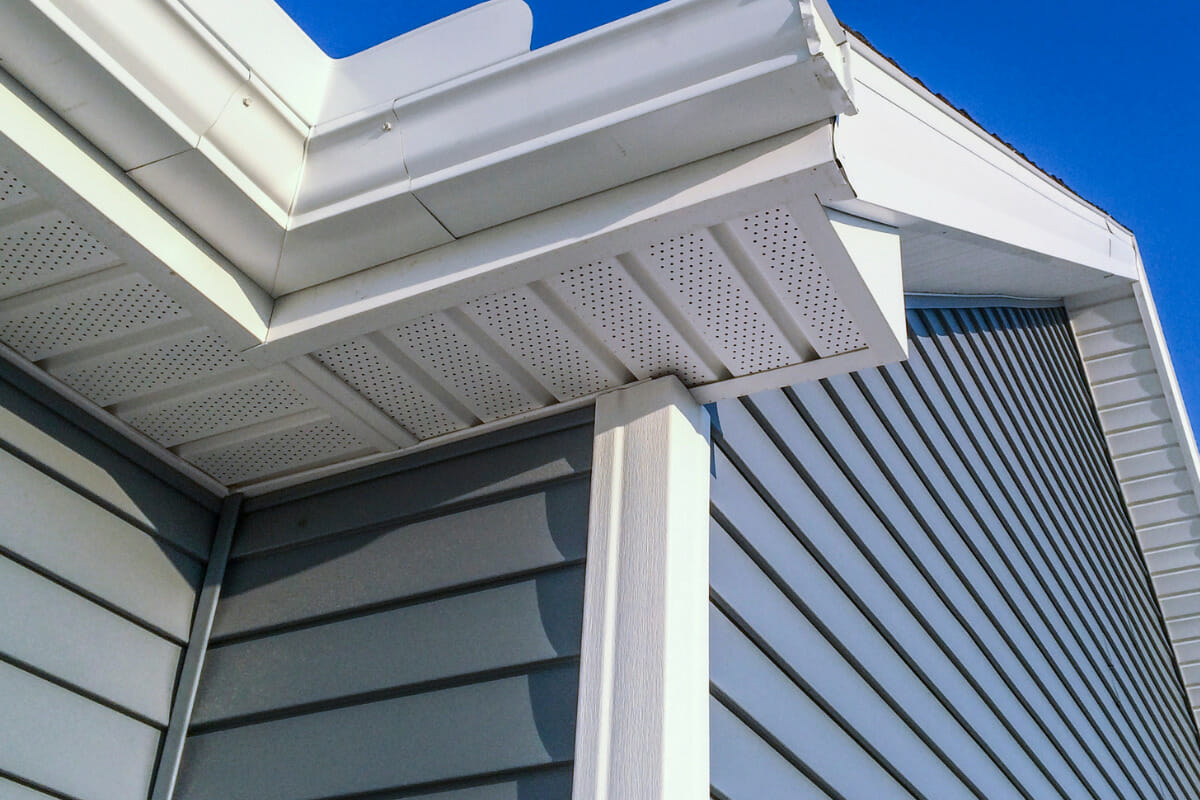
Gable Vents
Gable roofs are one of the most popular types of roofing systems in the U.S. They are known for their simplistic design and ability to offer better drainage than other roof styles. From the same term comes gable vents.
Gable vents are the type of roof vents that are installed on the gable end of a building, which is the triangular wall formed by the sloping sides of the roof. They are used to provide ventilation for the attic space and help regulate the temperature and moisture levels in your home.
These types of roof vents are available in a variety of shapes and sizes, and the manufacturers typically make them out of wood, vinyl, aluminum, or other materials. You can also paint or stain them to match or complement the exterior of a building.
The gable vents are often compared to ridge vents. While they are more affordable than ridge vents, they are also less flexible in terms of ventilation. They may not be suitable for use on all types of buildings or climates, and may not be as effective as other types of roof vents in some situations.
Overall, gable vents can be a good choice for providing ventilation in a building, but it is important to carefully consider all factors before deciding.

Electric Roof Vents
Electric roof vents are power vents that use electricity to power a fan or other mechanical component that ventilates the attic space. They are designed to provide ventilation while minimizing energy consumption and are typically controlled by a thermostat or other temperature sensor. The thermostat and humidistat are features that allow the vents to maintain an adequate temperature in the attic throughout the year by circulating fresh air.
Also known as power attic ventilation systems, they have a round, dome-like shape that fits well with most roof styles and is unlikely to reduce your home’s curb appeal.
One of the obvious downsides of electric-powered roof vents is that they can be costly. Electric roof vents do require a source of electricity to operate, which can increase energy costs, and most homeowners do not like this aspect of them since they feel electric vents spike their energy bills. Additionally, you will need to replace the motors over time.
Many electric vents are available on the market, each with a different level of power and fan speed. Be sure to buy a power vent that can effectively cover the size of your attic/home.
Factors That Affect The What Type Of Roof Vents You Should Buy
There are several factors to consider when selecting a roof vent for a building. Some of the key factors have been included below.
Climate:
Climate can play a role in determining the type of roof vents that are most suitable for a particular location. In areas with high winds, wind turbines can be used to provide a constant flow of air through the attic and out of the roof vents, which also helps to prevent wind damage to the roof. In hot and humid climates, power vents or ridge vents can provide proper roof ventilation.
Size And Shape Of The Vent:
The size and shape of the vent should be appropriate for the size and shape of the roof and the size of the attic space. Vents that are too small may not be effective at providing proper ventilation, while vents that are too large may not be aesthetically pleasing or may not be suitable for the roof material.
Type Of Roof Material:
The type of material your roof is made of will determine the types of vents that are suitable for use. Some materials, such as metal or tile, may not be compatible with certain types of vents, while others may require special considerations or installation techniques. It is important to consider your roofing material before installing passive roof vents or exhaust vents.
Building Codes
Building codes vary by location and have specific requirements for the type and number of roof vents that must be installed. It is important to check with your local building department to ensure that the type of vent you are installing meets code requirements. Failure to comply with building codes can result in fines or the need to remove and replace non-compliant vents, which can be costly.
Best Roof Installation Services In Pittsburgh
Now that you are familiar with the best types of roof vents in the U.S., it’s time to focus on the next step.
Hepler Contracting LLC is a premier roofing contractor serving Pittsburgh and surrounding areas. We are experts when it comes to installing roof vents and have a team of experienced and skilled professionals who can assess your needs and recommend the best type of roof vent for your building. Whether you are looking for static vents, powered vents, or natural ventilation, we can do it all.
We can also help with maintaining your roof vents to ensure that they are functioning properly and providing optimal ventilation for your attic.
Not only offer attic vents, but we also offer other services such as new roof installation, roof repair, and replacement. Contact us today at (412) 694-8785 to learn more about our services.
